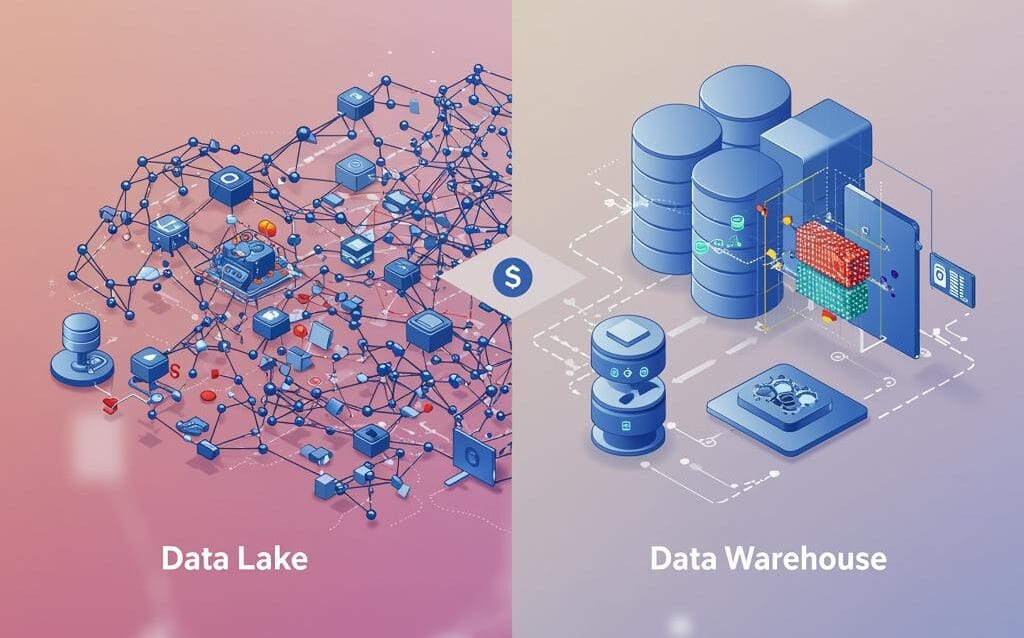Data Lake vs Data Warehouse: Architecture Strategy
Data Lake vs. Data Warehouse: Strategic Architectural Decisions
In today’s data-driven world, organizations are faced with the challenge of managing and leveraging vast amounts of information. Two prominent architectural patterns for data storage and analysis are Data Lakes and Data Warehouses. Choosing the right architecture is a strategic decision that significantly impacts an organization’s ability to derive valuable insights and gain a competitive edge. This post will delve into the key differences between these two approaches, exploring their strengths, weaknesses, and ideal use cases to help you make an informed decision.
Understanding Data Warehouses
What is a Data Warehouse?
A Data Warehouse is a repository of structured, filtered data that has already been processed for a specific purpose. It’s designed for analytical reporting and decision support. Data is typically extracted from various operational systems, transformed to conform to a predefined schema (schema-on-write), and loaded into the warehouse. This process, known as ETL (Extract, Transform, Load), ensures data consistency and quality.
Key Characteristics of a Data Warehouse:
- Structured Data: Data is organized in tables with predefined schemas.
- Schema-on-Write: Data is transformed and structured before being loaded.
- ETL Process: Data is extracted, transformed, and loaded from source systems.
- Optimized for Analytics: Designed for fast and efficient querying.
- Subject-Oriented: Data is organized around specific business subjects (e.g., customer, product, sales).
- Non-Volatile: Data is read-only and not updated.
When to Use a Data Warehouse:
A Data Warehouse is a good choice when:
- You need consistent and reliable reporting and analytics.
- You have well-defined business questions and reporting requirements.
- Your data is primarily structured and conforms to a predefined schema.
- Data quality and consistency are paramount.
- You need fast query performance for known analytical workloads.
Exploring Data Lakes
What is a Data Lake?
A Data Lake is a centralized repository that allows you to store all your structured, semi-structured, and unstructured data at any scale. Data is stored in its raw, native format, without the need for upfront transformation. This “schema-on-read” approach provides flexibility and agility, allowing you to explore and analyze data in various ways. Data Lakes are often built on distributed storage systems like Hadoop or cloud-based object storage.
Key Characteristics of a Data Lake:
- Structured, Semi-structured, and Unstructured Data: Can store data in any format (e.g., CSV, JSON, images, video).
- Schema-on-Read: Data is transformed and structured only when needed for analysis.
- ELT Process: Data is extracted, loaded, and then transformed (Extract, Load, Transform).
- Designed for Exploration and Discovery: Enables data scientists to explore data and discover new insights.
- Scalable and Cost-Effective: Can handle large volumes of data at a lower cost.
When to Use a Data Lake:
A Data Lake is a good choice when:
- You need to store a variety of data types, including unstructured data.
- You don’t know in advance what questions you’ll be asking of the data.
- You need to support data science and machine learning initiatives.
- Scalability and cost-effectiveness are important considerations.
- You want to enable data exploration and discovery.
Data Lake vs. Data Warehouse: A Comparative Analysis
Data Structure and Schema
The most significant difference lies in the data structure and schema. Data Warehouses require structured data and employ a schema-on-write approach, forcing data to conform to a predefined schema before being loaded. Data Lakes, on the other hand, support a variety of data types and use a schema-on-read approach, allowing data to be stored in its raw format.
Data Processing and Transformation
Data Warehouses use ETL (Extract, Transform, Load), where data is transformed before being loaded. Data Lakes use ELT (Extract, Load, Transform), where data is loaded first and transformed later. This difference impacts the flexibility and agility of the system. ETL is more rigid but ensures data quality upfront. ELT is more flexible but requires more processing power during analysis.
Use Cases and Analytical Capabilities
Data Warehouses are optimized for analytical reporting and decision support, providing fast query performance for known analytical workloads. Data Lakes are designed for data exploration, discovery, and machine learning, enabling data scientists to uncover new insights from diverse data sources.
Cost and Scalability
Data Lakes generally offer better scalability and cost-effectiveness, especially for large volumes of data. Data Warehouses can be more expensive to scale, particularly for storing unstructured data.
Data Governance and Security
Data Governance and Security are critical considerations for both architectures. Data Warehouses, with their structured data and predefined schemas, often have more mature governance and security practices. Data Lakes require robust governance frameworks to manage data quality and access control.
Choosing the Right Architecture or a Hybrid Approach
The choice between a Data Lake and a Data Warehouse depends on your specific business requirements, data characteristics, and analytical goals. Many organizations are adopting a hybrid approach, combining the strengths of both architectures. A hybrid approach can involve using a Data Lake to store raw data and then using ETL to move subsets of the data into a Data Warehouse for reporting and analytics.
Consider these questions when making your decision:
- What are your primary analytical goals?
- What types of data do you need to store and analyze?
- What are your data quality requirements?
- What is your budget and scalability needs?
- What are your data governance and security requirements?
Conclusion
Data Lakes and Data Warehouses are powerful architectural patterns for managing and leveraging data. Understanding their key differences, strengths, and weaknesses is crucial for making informed decisions. By carefully considering your business requirements and analytical goals, you can choose the right architecture – or a hybrid approach – to unlock the full potential of your data and drive business success. Remember, the best solution is the one that best aligns with your organization’s specific needs and strategic objectives.

